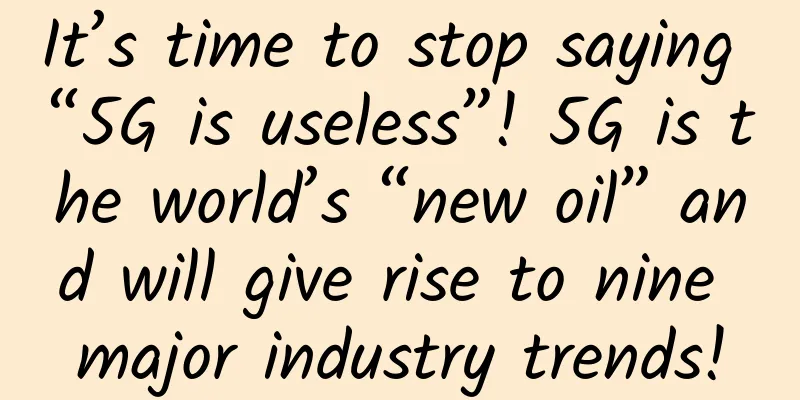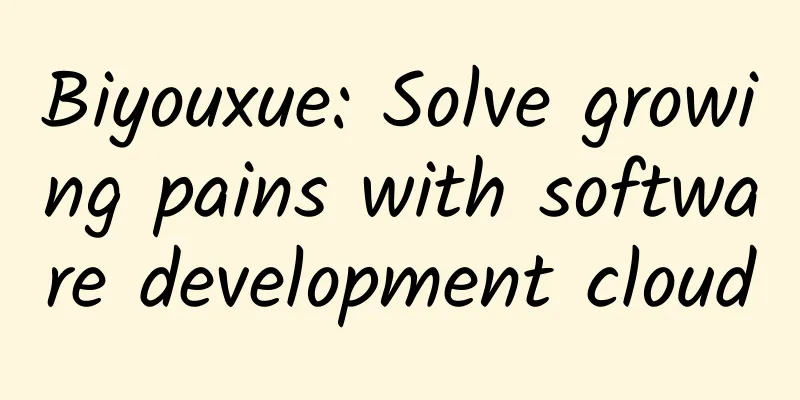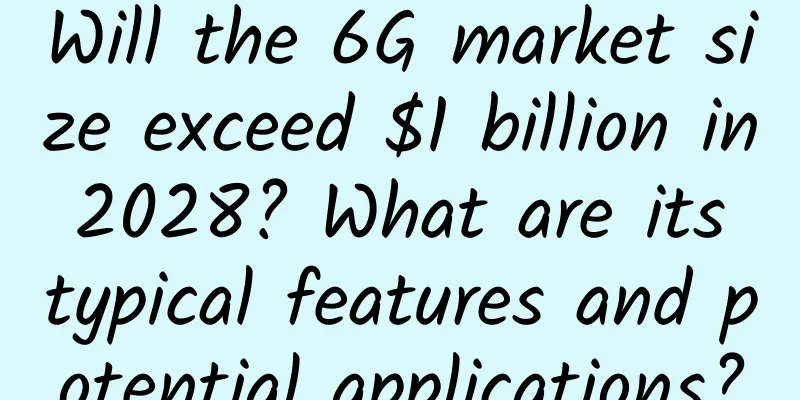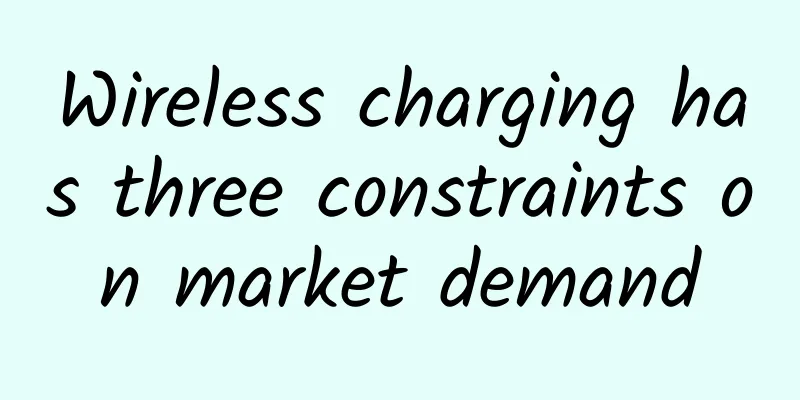It’s time to stop saying “5G is useless”! 5G is the world’s “new oil” and will give rise to nine major industry trends!

|
This article is reprinted from the WeChat public account "悲了伤的白犀牛", written by 悲了伤的白犀牛. To reprint this article, please contact 悲了伤的白犀牛 public account. The key technical features of 5G are mainly reflected in the "three supers" - ultra-large connections (connection density of 1 million connections/square kilometer), ultra-low latency (latency as low as 1ms), and ultra-high speed (peak speed exceeding 10Gbps). What trends will these three features of 5G bring about? What changes will they bring to people? 5G has been commercially available for more than a year, and more than 300,000 5G base stations have been built. However, the legendary magic of "5G changing the world" has not appeared. Instead, many intriguing strange phenomena have emerged, such as the debate over true and false 5G, the number of 5G package users far exceeding the sales of 5G terminals, and the scheduled shutdown of 5G base stations to save electricity costs, etc. These strange phenomena have once again made the "5G uselessness theory" very popular. In fact, over the past year or so, communications experts and industry analysts have been constantly reminding people that 5G may not be as good as imagined. At least in the near term, the role and value that 5G can play may not be fundamentally different from 4G. And the reality seems to be just as they said. 5G has indeed failed to come up with any decent applications and services. The biggest application of 5G is speed measurement. So what will 5G bring to this society and to ordinary people? As a communication self-media, White Rhino will make some analysis and predictions based on the key technical characteristics of 5G. The key technical characteristics of 5G are mainly reflected in the "three supers" - ultra-large connections (connection density of 1 million connections/square kilometer), ultra-low latency (latency as low as 1ms), and ultra-high speed (peak speed exceeding 10Gbps). What trends will these three characteristics of 5G bring about? What changes will they bring to people? 1. 5G ultra-large connection: awakening the perception of all things and realizing the interconnection of all things Compared with the previous 2G, 3G, and 4G networks, which mainly connected people, 5G has undergone a fundamental change in this regard. The objects it connects are more objects. The number of people is always limited, and the global population is only 6 billion, but objects are endless, and their number scale is at the trillion level. To connect these trillions of objects, it puts very high demands on the connection performance of 5G. From the technical indicators, the connection density of 5G reaches 1 million connections/square kilometer. Taking Shanghai as an example, Shanghai has an area of 6,340 square kilometers. If 5G coverage is fully realized, the number of people and objects that can connect to the Internet will reach 6.34 billion. With such powerful connection capabilities as 5G, it will completely awaken all the things around us that need network connection. It is estimated that in the next three years, the world's 4 billion livestock, 20 million containers, 300 million LED street lights, 1.8 billion water meters, etc. will become one of the hundreds of millions of Internet users; not only that, from large things like: vehicles on the road, equipment in progress in factories, containers on the way for freight, aircraft engines, indoor or outdoor environmental monitoring equipment; from small things like: TVs, refrigerators, washing machines, microwave ovens, watches, glasses, sneakers, even buttons on clothes, small pills swallowed into the body... will all be connected to the network. The data torrent brought by the perception of all things will be deeply integrated with various industries to form emerging industries such as the Industrial Internet of Things and the Internet of Vehicles, providing key support for the realization of the smart world and innovative smart services. Trend 1: Smart Factory (Software-Defined Factory) In order to save costs and improve efficiency, more and more factories are moving towards automation and informatization, which is accompanied by more and more networked devices in the factory, from small surveillance cameras on the production line to large automatic robotic arms, all of which need to be connected to the network. The connection capacity and speed of 5G perfectly match the needs of the next generation of factories - from production planning, to raw material procurement, to production and manufacturing, to sales and distribution, 5G means that factories can connect more sensors, equipment and assets through a unified network, so as to gain more real-time and in-depth insights into market demand and master the supply chain. Not only that, 5G technology can also make the production organization of factories more flexible. Managers can flexibly adjust the network in real time according to production needs. For example, they will eventually be able to decompose a single physical 5G network into multiple virtual networks through network slicing. For example, in order to improve the efficiency of operating equipment or when market demand increases, part of the network of a manufacturing plant may be segmented. For example, managers can process desensitized data on the cloud, while controlling sensitive data locally through offline edge computing functions. 5G's massive IoT connections and speed, coupled with edge computing capabilities, generate massive amounts of data all the time. Fed by large amounts of near-real-time, high-quality data, AI can quickly "learn" from its mistakes and make smarter, faster, and more reliable decisions. AI will really come into its own. AI can be used to control factory production without human intervention. Not only can it be used to control machines, but it can also predict problems in the supply chain, prevent fraud, and evaluate production opportunities. The future 5G smart factory will be centered on a fully connected experience. From a large number of device connections and innovative technology experiences to near real-time automation and network flexibility, 5G will bring significant progress to smart factories. And manufacturing companies can ultimately achieve significant benefits such as improved performance, operational efficiency, and increased safety. Trend 2: Smart Farm With the accelerated application of modern information technologies such as mobile Internet, Internet of Things, big data, and artificial intelligence in agricultural production, agricultural production is realizing refined, digital, and intelligent management. Online agriculture is gradually taking shape, and the important role of informatization in improving land output, resource utilization, and labor productivity is becoming increasingly prominent. The development of 5G networks will provide farmers and agricultural enterprises with the infrastructure needed for smart agriculture. They will be applied to Internet of Things technology to track, monitor, automate, and analyze agricultural activities. At the MWC 2019 Shanghai Conference, Huawei exhibited a smart farm solution: Because different cows have different physiological cycles, missing an estrus period will cause each cow to lose about 2,000 yuan in benefits. The 5G-based cow monitoring system, first, allows the smart collars on the cows to transmit the collected data to the cloud for scientific analysis anytime and anywhere; second, the cow information management platform uses the vital signs data of each cow to comprehensively monitor the health of the animals. For example, the ear tags of cows will sound an alarm when a disease is detected, and the sick cows will be automatically isolated. In the smart farm solution, 5G is like a "smart shepherd boy", using technology to monitor animal health, physiological cycles, location and other information, and also preparing for the future development of new blockchain applications such as green food traceability. Trend 3: Smart Home The concept of smart home has been around for a long time, but to achieve true "intelligence", it is necessary to ensure that all smart devices in the home can connect to a stable and sensitive communication network and can achieve real-time data transmission, analysis and feedback on the same platform. In the past few years, due to the limitations of terminal power consumption and wireless network coverage and transmission speed, smart home has remained at the level of beautiful planning. The arrival of 5G is like the last piece of a puzzle, truly integrating technologies such as the Internet of Things, cloud computing, big data, artificial intelligence, and automatic control, and effectively combining home life such as intelligent control of home devices, perception of the home environment, perception of family health, home safety perception, as well as information exchange and consumer services, to create a healthy, safe, comfortable, low-carbon, and convenient personalized home life. Driven by 5G, household smart robots will be stationed in thousands of homes in the foreseeable future. Due to the edge computing capabilities of 5G, data will be closer to the source. This capability, combined with high speed and large bandwidth, will create smaller, cheaper, and freer robots. 5G technology will help these robots become more agile, make faster decisions, and quickly adapt to changes in near real time. 2. 5G ultra-high speed: Upgrading the way you perceive things, making it feel like you are there even if you are thousands of miles away According to the technical indicators of 5G, its peak downlink rate will reach 20Gbit/s, and the uplink rate can reach 10Gbit/s. What does this mean? Today, we feel that 4G is very fast, but the peak downlink rate of 4G is only 1Gbit/s, which means that the speed of 5G is 20 times that of 4G. This is not simply a quantitative improvement, but a qualitative improvement, which will completely change our current network model and open up a large-volume growth model with big videos as the main data for various industries in the intelligent era. For example, such a high rate will greatly stimulate the application of cloud computing, and there will be no difference between storing files locally and storing them in the cloud; for example, such a high-end rate will realize large-capacity file transmission without any obstacles, and the realization of "high-definition video traffic" will become a new business standard, releasing the intelligent value of the video industry in cloud games, cloud education, and cloud medical care. Trend 4: Universal wearable devices Smart wearable devices were all the rage in the early days of the 4G era, but they are still a long way from truly changing people's lives. For example, insufficient battery life, limited mobile network bandwidth, and excessive network latency have all caused wearable devices to rely on smartphones and connect to phones via WiFi or Bluetooth, and they cannot exist as independent devices. The arrival of 5G will change all this. Smart wearable devices will become a must-have product for almost everyone in the 5G era. Not only can they enhance the perception of ordinary people, but more importantly, they will "make up" for the connection between many special groups and the world. For example, through smart helmets, 39 million blind people will live a normal life like ordinary people. The guide smart helmet project will provide high-precision real-time positioning navigation, path planning and obstacle avoidance services for the visually impaired through cloud-based visual presentation. At the same time, the helmet's leading hybrid intelligent services such as face recognition, scene recognition, object recognition and image classification will help the blind to fully alleviate social barriers. In the field of enterprise applications, 5G will also provide huge development space for enterprise-level wearable and intelligent auxiliary devices. For example, empowered by 5G networks, wearable devices will provide "hands-free" information services for assembly line workers, improving their work efficiency and safety. For example, 5G's cloud AI enables wearable devices to have AI capabilities, which can enhance users' ability to search for specific objects or people. For example, 5G will provide a huge uplink throughput of 10Gbps for high-definition video upload and analysis, face recognition, and automatic license plate recognition. Trend 5: VR+ VR has also experienced a very hot hype period, but there has been no nationwide killer application. One of its bottleneck problems is that the mobile network speed cannot download huge amounts of real-time information in time, making it difficult to control the image delay to a reasonable range. When using VR, when the image delay exceeds 20 milliseconds, users will feel uncomfortable. The ideal state is that the image delay does not exceed 7 milliseconds. As we all know, the network delay of 4G is more than 50 milliseconds, which is difficult to support the perfect VR experience. 5G's high downlink rate of 20Gbit/s and 10Gbit/s, as well as its low latency of 1 millisecond, provide a good network environment for the development of VR. It is estimated that by 2025, the number of wearable devices in the world will reach 8 billion, and the number of VR/AR/MR individual users will reach 440 million. With the improvement of cloud capabilities, miniaturization of equipment, and the accelerated development of general computing power, the market space of cloud VR will release greater commercial value, reaching US$292 billion by 2025. On this basis, interactive modes such as entertainment, communication, and remote office have all ushered in revolutionary changes. The development of AR/VR applications will add new dimensions to perception, allowing human perception to transcend the limitations of the physical world. VR+ will become a new tool for the development of all walks of life. For example, VR+ tourism will upload the tourism resources of the physical world to the digital space, and users can use VR to tour beautiful scenic spots in a "park-wide" manner; for example, VR+ retail will once again subvert the way people shop; for example, VR+ real estate will create a huge market of up to US$750 million. Trend 6: Holographic Remote Conferencing Based on VR, 5G may push people's perception to a higher level. Through 5G, huge computing workloads can be rendered on the cloud, lightweight VR terminals can be used, and high-quality video output can be used to reproduce real scenes, providing individuals, families, and industries with information that changes with the scene and an "immersive" interactive environment. For example, users can hold or enter a holographic video conference at any location. By highly restoring user behaviors and realistic virtual scenes, participants can achieve face-to-face communication. Different from general video conferences, holographic conferences are more vivid and real, and the communication effect is better. Users can browse files, 3D draw, screen share, discuss, etc. in virtual scenes. In addition to remote meetings, through the holographic space created by 5G, users can freely enter virtual social spaces, such as bars, board games, KTVs, and the suburbs, and have virtual gatherings with distant friends or strangers in real life. As the VR scene experience continues to improve, the form of social interaction will transcend the current interactive methods such as text, voice, and video, and gain a higher dimension. In the future, the aggregation platform based on VR applications will become the entrance to social interaction. 3. 5G ultra-low latency: expanding perception space 5G technology can effectively reduce latency and increase data transmission rates. The response time can be reduced from the average 50 milliseconds (0.05s) of 4G to 1-2 milliseconds (0.001-0.002s). Similarly, the data transmission speed can be increased from 0.02-0.03Gbps to 0.1-5.0Gbps. One of the most important application scenarios of 5G is URLLC, which means ultra-reliable low-latency communication. URLLC can guarantee 99.999% data reliability, no interruption and millisecond-level response capability, which can quickly and accurately process data through the 5G network. Through 5G technology combined with AI and URLLC data, millions of cars around the world will respond to local 5G traffic systems. Users' cars can share data with other vehicles through 5G, and they can get support faster in the event of an emergency. In addition to autonomous driving, 5G's ultra-low latency can also benefit games, VR, industrial manufacturing, and medical institutions. Trend 7: Autonomous driving According to statistics, nearly 1.4 million people die in traffic accidents every year around the world, 20-50 million people are injured in traffic accidents, and the economic losses caused by traffic accidents are as high as 2 trillion US dollars each year. Among the factors that cause traffic accidents, the driver's reaction speed is a very critical factor. The arrival of 5G will make autonomous driving a reality. The 5G-controlled car control system will replace humans to drive cars, and the ultra-low latency of 5G can minimize the latency caused by human reaction speed - the reaction speed of ordinary people is 0.4 seconds, that is, between 400 milliseconds, while 5G only takes 1 millisecond. The 399 milliseconds saved are behind dozens of meters of braking distance and greatly reduced casualties. The changes that 5G brings to the transportation industry go far beyond this. 5G's secure, reliable, low-latency and high-bandwidth connections will make autonomous driving, platooning, vehicle lifecycle maintenance, sensor data crowdsourcing, etc. a reality. 5G will become a unified connection technology to meet the connection requirements of future shared cars, remote operation, autonomous and collaborative driving. Trend 8: Digital Sky (Unmanned Passenger Aircraft) As the number of cars in cities continues to hit new peaks, more and more cities have become "traffic-congested cities", and the sky has become the future of urban transportation. With the development of the drone industry and the in-depth use of 5G connection technology in drone application scenarios, the sky is rapidly becoming digital, and people's activity space is rapidly upgrading to the "digital sky". Based on the deep integration of 5G networks and the drone industry, the increased coverage of low-altitude networks, and the gradual release of airspace utilization space at the government level, innovative scenarios for networked drones used in urban management functions such as transportation, monitoring, emergency rescue and disaster relief will not only be limited to point-to-point communication between drones and remote controls, but will also seek business opportunities between drones and even between drones and people. For example, in the near future, unmanned passenger aircraft will become "shared air taxis" - they will take off like helicopters and fly like airplanes, without the need for runways or specially built helipads. Whether users are commuting, traveling, shopping, or just going out for a work lunch, the aircraft will appear anytime and anywhere. The flying space in the air is a "shared resource", and all routes are arranged in the intelligent scheduling of data in the 5G network. Trend 9: Smart healthcare (wireless remote medical assistance) At present, remote wireless medical care has actually appeared in our lives, such as wireless infusion, remote real-time consultation, remote ultrasound examination, etc., but these are more of auxiliary medical means, and are still a long way from truly curing diseases and saving lives, especially saving lives and healing the wounded in a race against time. 5G makes smart medical care a reality. With the support of 5G's large bandwidth and low-latency network, the body surface force feedback signal of a patient suffering from an asthma attack can be transmitted to the doctor's VR and tactile devices in just milliseconds, which will buy the patient a huge amount of golden treatment time; in the operating room, medical on-site audio and video and B-ultrasound images are transmitted in real time, helping doctors remotely control the ultrasound probe on the patient's side, breaking the original time limits for emergency and multi-expert consultations; on the teaching side, human anatomical materials used to be quite precious, but using VR virtual teaching and surgical simulation in the cloud not only allows students to observe the patient more clearly, but also allows them to conduct repeated virtual training, or broadcast and record the training and surgical process for communication and sharing. at last The revolutionary significance of 5G lies in that it not only connects people, but also connects people with things, and things with things, forming an era of the Internet of Everything. This will have a huge impact on the entire social structure and economic development. In 2025, the number of personal intelligent terminals will reach 40 billion, the penetration rate of personal intelligent assistants will reach 90%, and intelligent service robots will enter 12% of households. Personal potential will be greatly released with the support of terminal perception, two-way communication and active service. In terms of business and society, in 2025, the world's 100 billion connections will be ubiquitous in various fields such as utilities, transportation, manufacturing, medical care, agriculture, and finance, promoting digital transformation. By then, the cloudification rate of enterprise applications will reach 85%, the utilization rate of AI will reach 86%, and the data utilization rate will increase dramatically to 80%. The 180 billion TB of new data each year will continuously create intelligence and value. In 2030, the direct and indirect outputs driven by 5G will reach 6.3 trillion yuan and 10.6 trillion yuan respectively, and will also drive 8 million direct and 11.5 million indirect jobs. By 2035, 5G will create $12.3 trillion in economic output worldwide (equivalent to the US consumer spending in 2016), and contribute $3 trillion to the global annual GDP (equivalent to India, the world's seventh largest economy). From the perspective of the impact of mobile communications on the economy and society, 5G will become a new "universal basic technology" like electricity, or in other words, 5G will become the world's new oil. The implementation of 5G will not only meet people's business needs in various areas such as living, working, leisure, and transportation, but 5G will also penetrate into the Internet of Things and various industries, effectively meeting the business needs of vertical industries such as industry, medical care, and transportation, and bringing us into an intelligent world where everything is sensed, connected, and intelligent. |
<<: Come and have a look!!! TCP/IP knowledge points that you often overlook
>>: Japan's strategy to compete for world 6G technology
Recommend
LOCVPS 30% off, Hong Kong/Japan VPS 4GB memory package monthly payment starts from 29.4 yuan
LocVps is a long-established Chinese hosting comp...
How to connect Pod in K8S cluster with local network for debugging
[[404039]] Preface As we all know, when there is ...
Big data industry is a new trend. What are the advantages of operators?
The big data industry is a strategic emerging ind...
Anynode: $15/year KVM-1GB/20G SSD/2TB/Las Vegas
The last time I shared information about Anynode ...
A brief history of the development of the HTTP protocol and analysis of common interview questions
[[375750]] This article is reprinted from WeChat ...
I have seven solutions for implementing real-time web messaging
I have a friend~ I have built a small website, an...
Can 5G messaging become a moat for operators in the digital economy era?
The completion of the project of "5G Message...
The first batch of 5G mobile phones are about to be launched! What is the use of 5G? Should I change the card or the phone? Finally someone has made it clear...
Hello, everyone. I am Xue Zhiqian of the technolo...
「Product News」Interpretation of Dataphin's real-time R&D of batch and stream integration
background Every time the bell of the Double 11 g...
The full implementation of number portability is about to reach its first anniversary, and the winner may be different
On August 5, 2019, number portability entered the...
The development of 4G proves that there is no need to wait for 5G to mature before commercial deployment
It is too early for China Mobile to advance its 5...
Comprehensive popular science about "Internet of Vehicles"!
Speaking of the Internet of Vehicles, I believe e...
DogYun celebrates the 25th anniversary of Hong Kong's return to China. Hong Kong server is available for 2 months at 450 yuan, dual E5/32G/1TB SSD/20M bandwidth
DogYun has launched a special promotion for the 2...
5G is just about faster internet speed? If you think so, you are out!!!
1. What is 5G? The world's communication tech...
my country has already achieved commercial use of 5G, with leading technology and scale, but it is difficult to fully popularize it due to three problems
The most frequently heard topic in the past two y...









